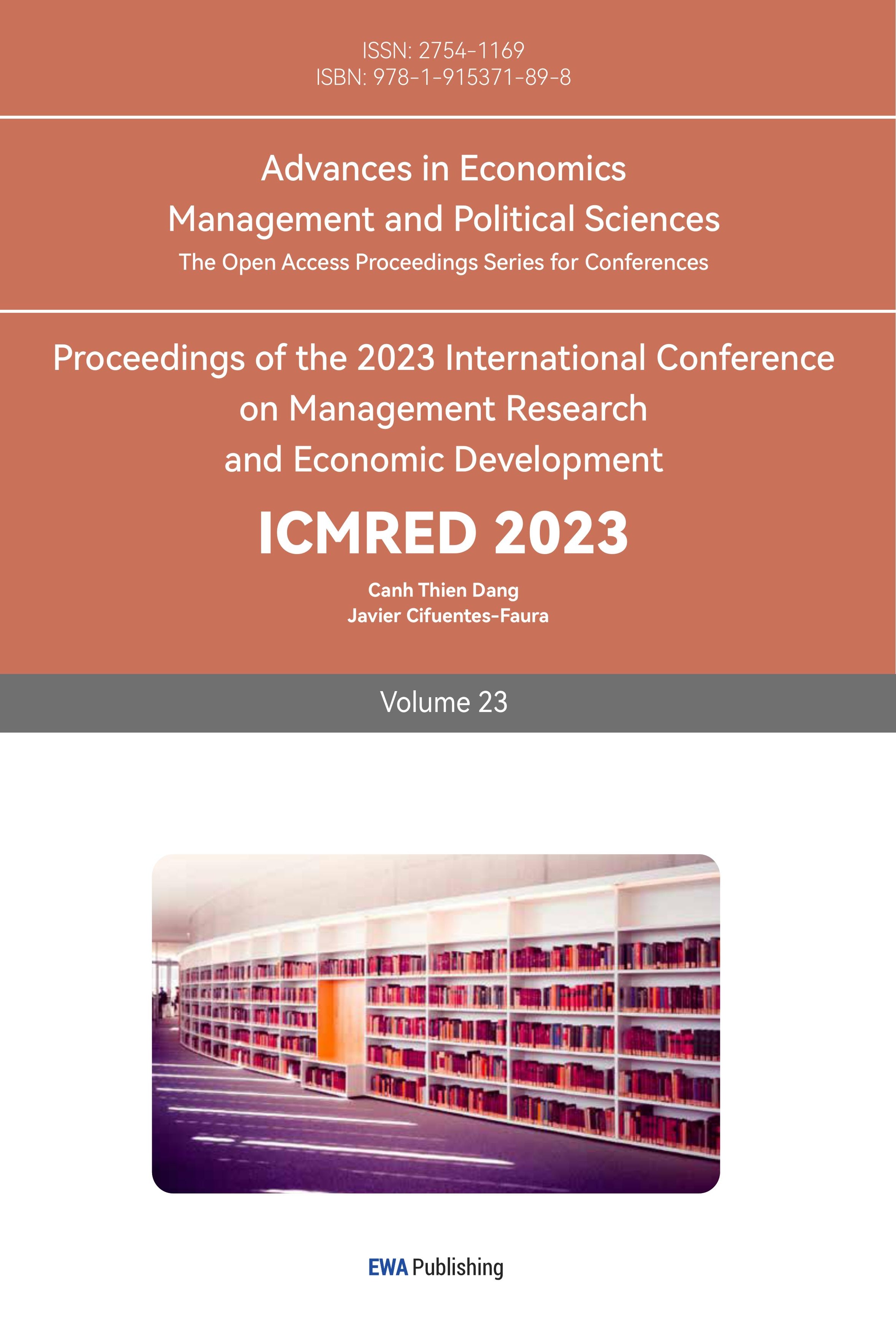References
[1]. Xingliang Zhu,Jia Wang,and Jiaoju. Ge.Empirical Analysis of Factors Influencing Credit Card Repayment based on Probit Model [J]. Consumer economy,2013(4):1557-1580
[2]. Kuangnan Fang,Guijun Zhang,andHuiying Zhang. Personal Credit Risk warning Method Based on Lasso-Logistic Model [J]. Quantitative and technical economic research,2014(2):125-136
[3]. Ruiting Mei,Yang Xu,and Guochang Wang. Analysis of credit card default prediction model and its influencing factors [J]. Statistics and Application, 2016, 5(3): 263-275.
[4]. Xie,Xuanli,Yan Shen,Haoxing Zhang,and Feng Guo.2018. Can Digital Finance Promote Entrepreneurship? –Evidence from China. Economic Quarterly [Chinese, Jingjixue Jikan],17(4):1557–1580
[5]. Manning, R. D. (2000). Credit card nation: the consequences of America's addiction to credit. New York: Basic Books.
[6]. Jagtiani, Julapa, and Catharine Lemieux. 2019. The Roles of Alternative Data and Machine Learning in Fintech Lending: Evidence from the LendingClub Consumer Platform. Financial Management 48(4):1009–1029.
Cite this article
Sun,H. (2023). Credit Card Default Prediction Analysis: Based on Default Data of Taiwanese Customers from April to September 2005. Advances in Economics, Management and Political Sciences,23,308-316.
Data availability
The datasets used and/or analyzed during the current study will be available from the authors upon reasonable request.
Disclaimer/Publisher's Note
The statements, opinions and data contained in all publications are solely those of the individual author(s) and contributor(s) and not of EWA Publishing and/or the editor(s). EWA Publishing and/or the editor(s) disclaim responsibility for any injury to people or property resulting from any ideas, methods, instructions or products referred to in the content.
About volume
Volume title: Proceedings of the 2023 International Conference on Management Research and Economic Development
© 2024 by the author(s). Licensee EWA Publishing, Oxford, UK. This article is an open access article distributed under the terms and
conditions of the Creative Commons Attribution (CC BY) license. Authors who
publish this series agree to the following terms:
1. Authors retain copyright and grant the series right of first publication with the work simultaneously licensed under a Creative Commons
Attribution License that allows others to share the work with an acknowledgment of the work's authorship and initial publication in this
series.
2. Authors are able to enter into separate, additional contractual arrangements for the non-exclusive distribution of the series's published
version of the work (e.g., post it to an institutional repository or publish it in a book), with an acknowledgment of its initial
publication in this series.
3. Authors are permitted and encouraged to post their work online (e.g., in institutional repositories or on their website) prior to and
during the submission process, as it can lead to productive exchanges, as well as earlier and greater citation of published work (See
Open access policy for details).
References
[1]. Xingliang Zhu,Jia Wang,and Jiaoju. Ge.Empirical Analysis of Factors Influencing Credit Card Repayment based on Probit Model [J]. Consumer economy,2013(4):1557-1580
[2]. Kuangnan Fang,Guijun Zhang,andHuiying Zhang. Personal Credit Risk warning Method Based on Lasso-Logistic Model [J]. Quantitative and technical economic research,2014(2):125-136
[3]. Ruiting Mei,Yang Xu,and Guochang Wang. Analysis of credit card default prediction model and its influencing factors [J]. Statistics and Application, 2016, 5(3): 263-275.
[4]. Xie,Xuanli,Yan Shen,Haoxing Zhang,and Feng Guo.2018. Can Digital Finance Promote Entrepreneurship? –Evidence from China. Economic Quarterly [Chinese, Jingjixue Jikan],17(4):1557–1580
[5]. Manning, R. D. (2000). Credit card nation: the consequences of America's addiction to credit. New York: Basic Books.
[6]. Jagtiani, Julapa, and Catharine Lemieux. 2019. The Roles of Alternative Data and Machine Learning in Fintech Lending: Evidence from the LendingClub Consumer Platform. Financial Management 48(4):1009–1029.









